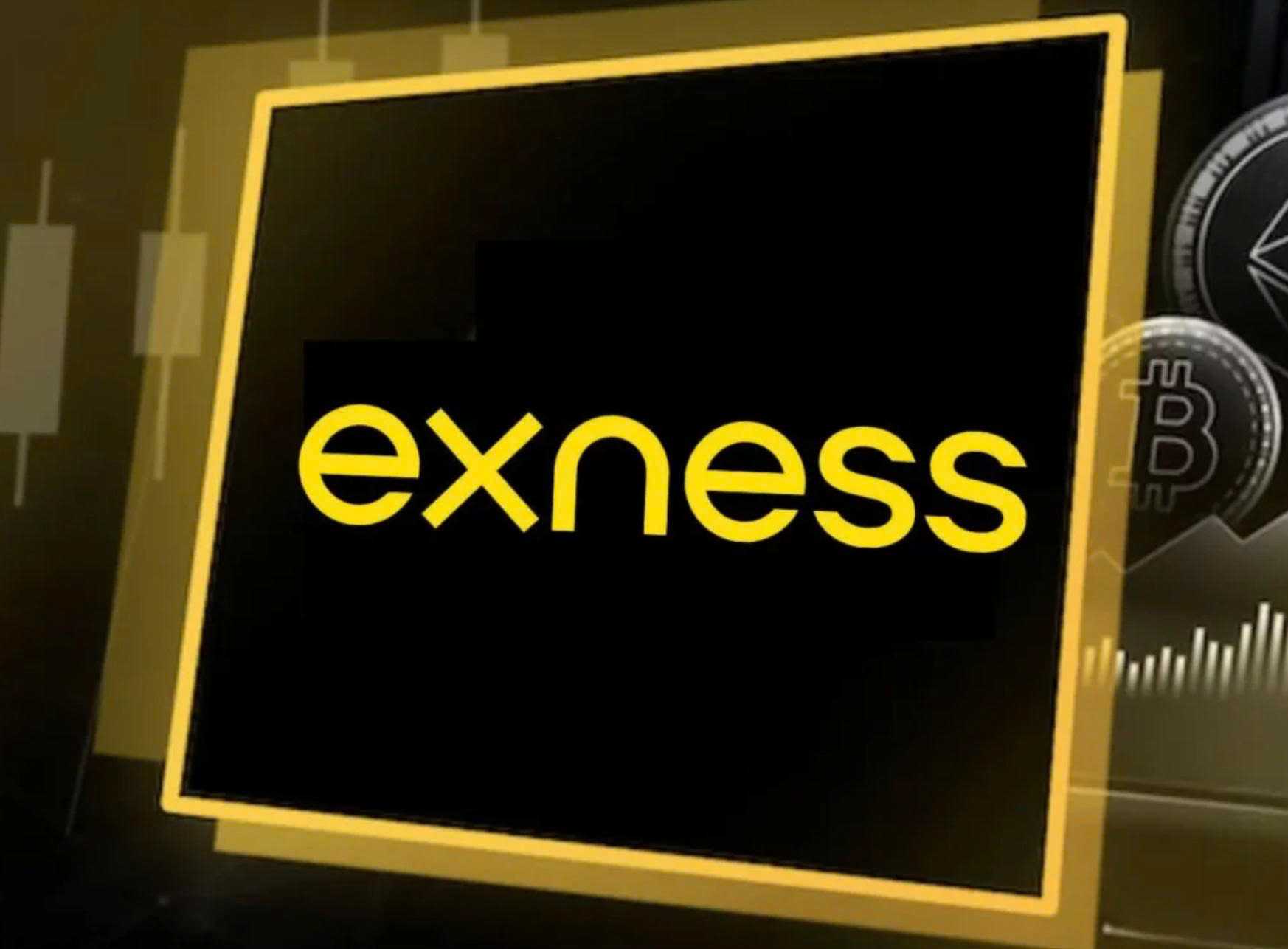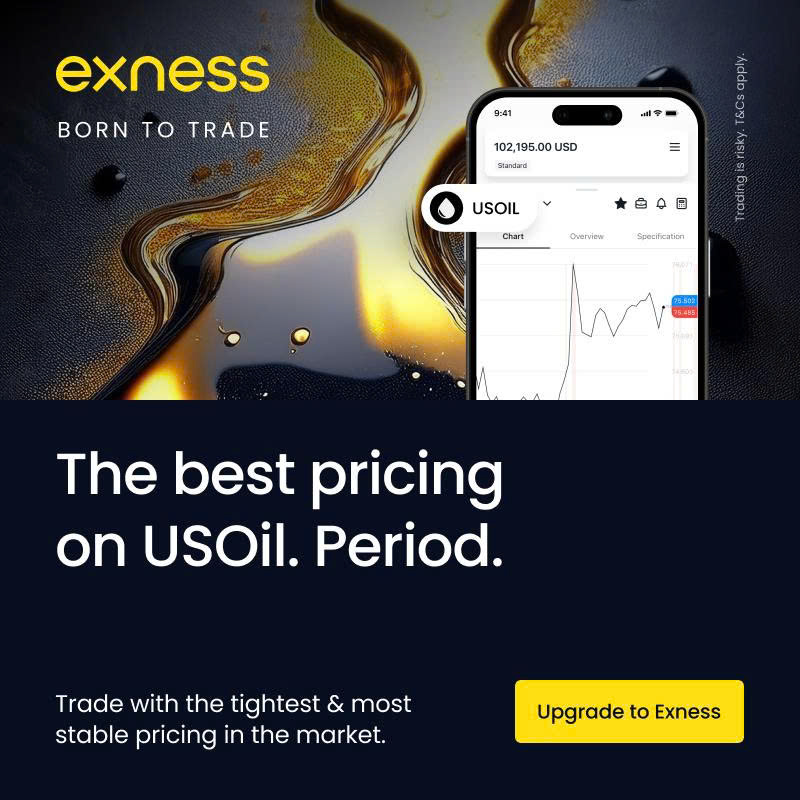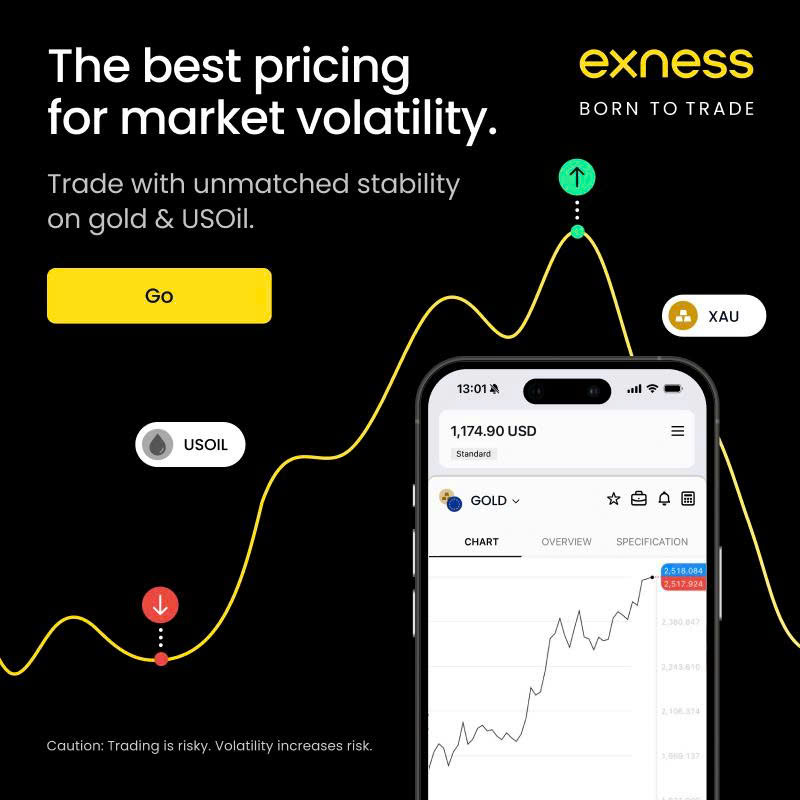
7 minute read
How to Trade Exness in INR: A Step-by-Step Guide for Indian Traders
from Trade Exness INR
If you’re an Indian trader wondering how to trade on Exness using Indian Rupees (INR), you’re in the right place. Exness is a globally recognized forex and CFD broker that makes trading accessible, cost-effective, and seamless for Indian traders by supporting INR accounts. This eliminates currency conversion fees and simplifies deposits and withdrawals. In this guide, I’ll walk you through everything you need to know to start trading on Exness in INR, from setting up an account to placing your first trade. Whether you’re a beginner or a seasoned trader, you’ll find practical tips to navigate the platform confidently. Let’s dive in!

✅ Trade with Exness now: Open An Account or Visit Brokers 👈
Why Choose Exness for Trading in INR?
Exness stands out for Indian traders for several reasons. Founded in 2008, it’s a trusted broker with over 1 million users worldwide, known for transparency, competitive spreads, and fast execution. Here’s why it’s a great fit for trading in INR:
INR Account Support: You can deposit, trade, and withdraw in INR, avoiding costly conversion fees.
Local Payment Methods: Exness supports UPI, Paytm, and bank transfers, making funding easy.
Low Spreads and High Leverage: Enjoy tight spreads and flexible leverage to maximize your trading potential.
User-Friendly Platforms: Access MetaTrader 4 (MT4), MetaTrader 5 (MT5), or Exness’s proprietary terminals.
24/7 Customer Support: Get help anytime via live chat, email, or phone in multiple languages.
But before we get into the nitty-gritty, a quick note: Forex trading in India is regulated by the Reserve Bank of India (RBI) and the Securities and Exchange Board of India (SEBI). Trading INR-based currency pairs (like USD/INR) is legal, but trading non-INR pairs (like EUR/USD) with offshore brokers like Exness operates in a legal gray area. Always ensure you understand the regulations and risks before diving in.
Step 1: Setting Up Your Exness Account in INR
Getting started with Exness is straightforward. Follow these steps to create an INR-based account:
Visit the Exness Website: Head to the official Exness site (exness.com). Double-check the URL to avoid phishing scams.
Click “Sign Up”: You’ll find the button on the homepage. It’s hard to miss!
Fill in Your Details: Provide your name, email, phone number, and other personal info. Accuracy is key, as you’ll need to verify this later.
Choose INR as Your Currency: During registration, select Indian Rupees as your account currency to skip conversion fees.
Verify Your Identity: Submit a government-issued ID (like an Aadhaar card or passport) and proof of address (like a utility bill). Indian traders may also need a PAN card for tax compliance. Verification usually takes a few hours but can extend to 24 hours during peak times.
Pro Tip: Choose the right account type for your needs. Exness offers:
Standard Account: Perfect for beginners with low spreads and no commissions.
Pro Account: Tighter spreads for experienced traders.
Cent Account: Trade in cents to minimize risk, ideal for newbies.
Zero Account: Near-zero spreads for high-frequency traders.
Raw Spread Account: Ultra-low spreads with a small commission.
For most Indian traders, the Standard Account is a solid starting point due to its simplicity and INR support.

✅ Trade with Exness now: Open An Account or Visit Brokers 👈
Step 2: Funding Your Exness Account in INR
Once your account is verified, it’s time to deposit funds. Exness makes this easy with INR-compatible payment methods. Here’s how:
Log in to Your Personal Area: Access your dashboard on the Exness website or app.
Navigate to Deposits: Click the “Deposit” button.
Select INR as Currency: This ensures no conversion fees.
Choose a Payment Method: Options include:
UPI: Instant deposits via Google Pay, PhonePe, Paytm, or BHIM.
Bank Transfers: Use IMPS, NEFT, or RTGS for direct deposits from banks like HDFC, ICICI, or SBI (takes 2-4 hours).
E-Wallets: Skrill, Neteller, or AstroPay for near-instant transactions.
Cryptocurrencies: Bitcoin, Ethereum, or Litecoin, which are converted to INR upon deposit.
Enter the Amount and Confirm: Follow the prompts to complete the transaction.
Note: UPI and e-wallets are the fastest, while bank transfers are better for larger amounts. Always check for any fees charged by payment providers, though Exness itself doesn’t add deposit fees.
Step 3: Choosing a Trading Platform
Exness offers multiple platforms to suit your trading style:
MetaTrader 4 (MT4): A classic choice with robust charting tools.
MetaTrader 5 (MT5): Advanced features for multi-asset trading.
Exness Web Terminal: Trade directly from your browser, no download needed.
Exness Trade App: Mobile trading for on-the-go access.
To get started:
Download Your Platform: Find MT4 or MT5 in the “Trading Platforms” section of your Exness Personal Area.
Log In: Use your account credentials to access your INR balance.
Customize Your Workspace: Add indicators like Moving Averages, RSI, or Bollinger Bands to your charts for better analysis.
Pro Tip: If you’re new, try the Exness Trade App for its simplicity or practice on a demo account to get comfortable with the platform.
Step 4: Placing Your First Trade in INR
Now that your account is funded and your platform is set up, let’s place your first trade. Here’s a quick guide:
Choose a Currency Pair: Stick to INR-based pairs like USD/INR or EUR/INR to stay compliant with Indian regulations. These pairs offer good liquidity and tighter spreads.
Analyze the Market:
Technical Analysis: Use indicators like Moving Averages or MACD to spot trends.
Fundamental Analysis: Monitor RBI interest rate decisions, inflation data, or global events affecting INR. Exness’s economic calendar and news feed are handy for this.
Place Your Order:
Market Order: Buy or sell at the current price.
Pending Order: Set a buy/sell order at a specific price (e.g., Buy Limit or Sell Stop).
Set Risk Management:
Stop Loss: Limit losses (e.g., set 20 pips below your entry for USD/INR).
Take Profit: Lock in gains (e.g., set 50 pips above entry).
Monitor and Close: Track your trade in the platform’s portfolio section and close it when ready.
Example: Let’s say you predict INR will weaken against USD due to rising US interest rates. You buy 0.1 lot of USD/INR at 83.50, set a stop-loss at 83.30, and take-profit at 84.00. If the price hits 84.00, you pocket ₹5,000 (minus spreads/commissions).
Step 5: Withdrawing Your Profits in INR
Cashing out is just as easy as depositing:
Go to Withdrawals: In your Personal Area, click “Withdraw.”
Select INR: Ensure INR is your withdrawal currency.
Choose a Payment Method: Use the same method as your deposit for compliance (e.g., UPI or bank transfer).
Enter the Amount: Most methods have no minimum withdrawal.
Confirm: UPI withdrawals are instant, while bank transfers take 1-3 business days.
Note: Exness processes withdrawals instantly (98% under 1 minute), but your bank or payment provider may take longer. Double-check details to avoid delays.
Tips for Successful Trading on Exness in INR
Start with a Demo Account: Practice risk-free to build confidence.
Use Exness’s Educational Resources: Webinars, tutorials, and articles help you sharpen your skills.
Manage Risk: Never risk more than 1-2% of your account per trade. Use stop-loss orders religiously.
Stay Updated: Follow INR-related news and use Exness’s economic calendar to anticipate market moves.
Understand Leverage: Exness offers high leverage, but use it wisely to avoid heavy losses.
Keep Records: Track deposits, withdrawals, and profits for tax purposes, as forex gains may be taxable in India.
Legal Considerations for Indian Traders
Forex trading in India is tightly regulated under the Foreign Exchange Management Act (FEMA). Key points:
INR Pairs Only: Trading USD/INR or EUR/INR is legal, but non-INR pairs (e.g., EUR/USD) are not allowed via SEBI-regulated brokers.
Offshore Brokers: Exness operates outside India and isn’t SEBI-regulated, placing it in a legal gray area. Many Indian traders use it via e-wallets or crypto, but this carries regulatory risks.
Tax Compliance: Report forex profits to avoid scrutiny under Indian tax laws.
Consult a financial advisor to ensure compliance with RBI and SEBI rules before trading.
Conclusion: Why Exness Is Worth Trying
Trading on Exness in INR is a game-changer for Indian traders. The ability to trade in your local currency, combined with low spreads, fast withdrawals, and a user-friendly platform, makes it a top choice. Whether you’re trading forex, commodities, or stocks, Exness offers the tools and flexibility to succeed.
✅ Trade with Exness now: Open An Account or Visit Brokers 👈
Read more:

